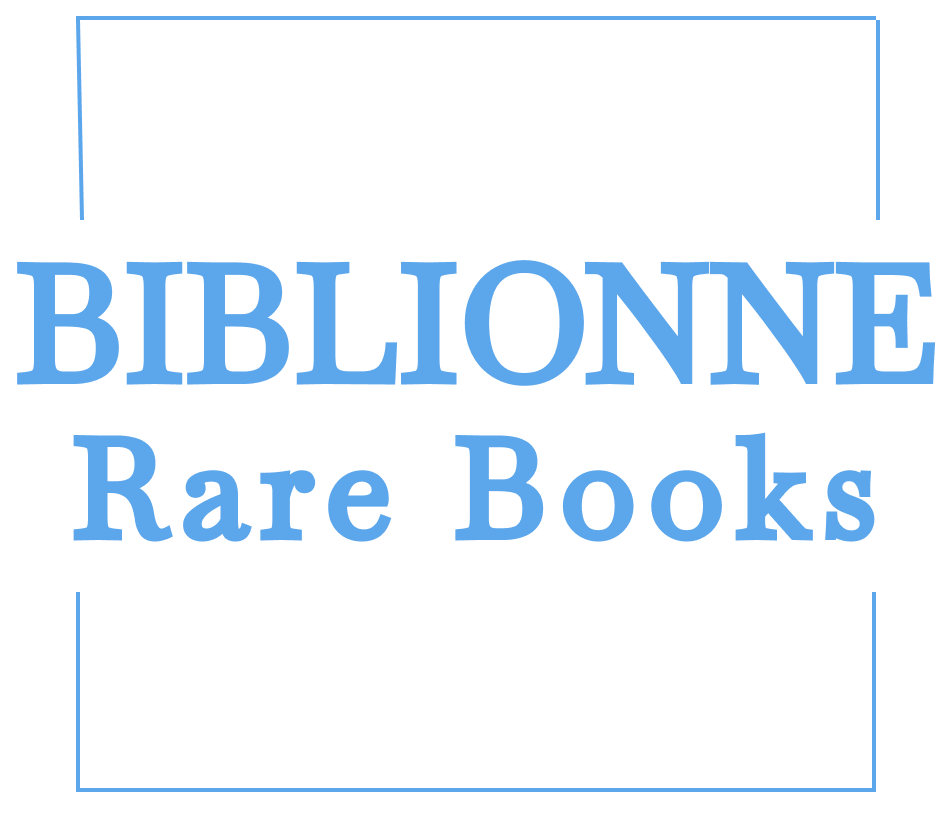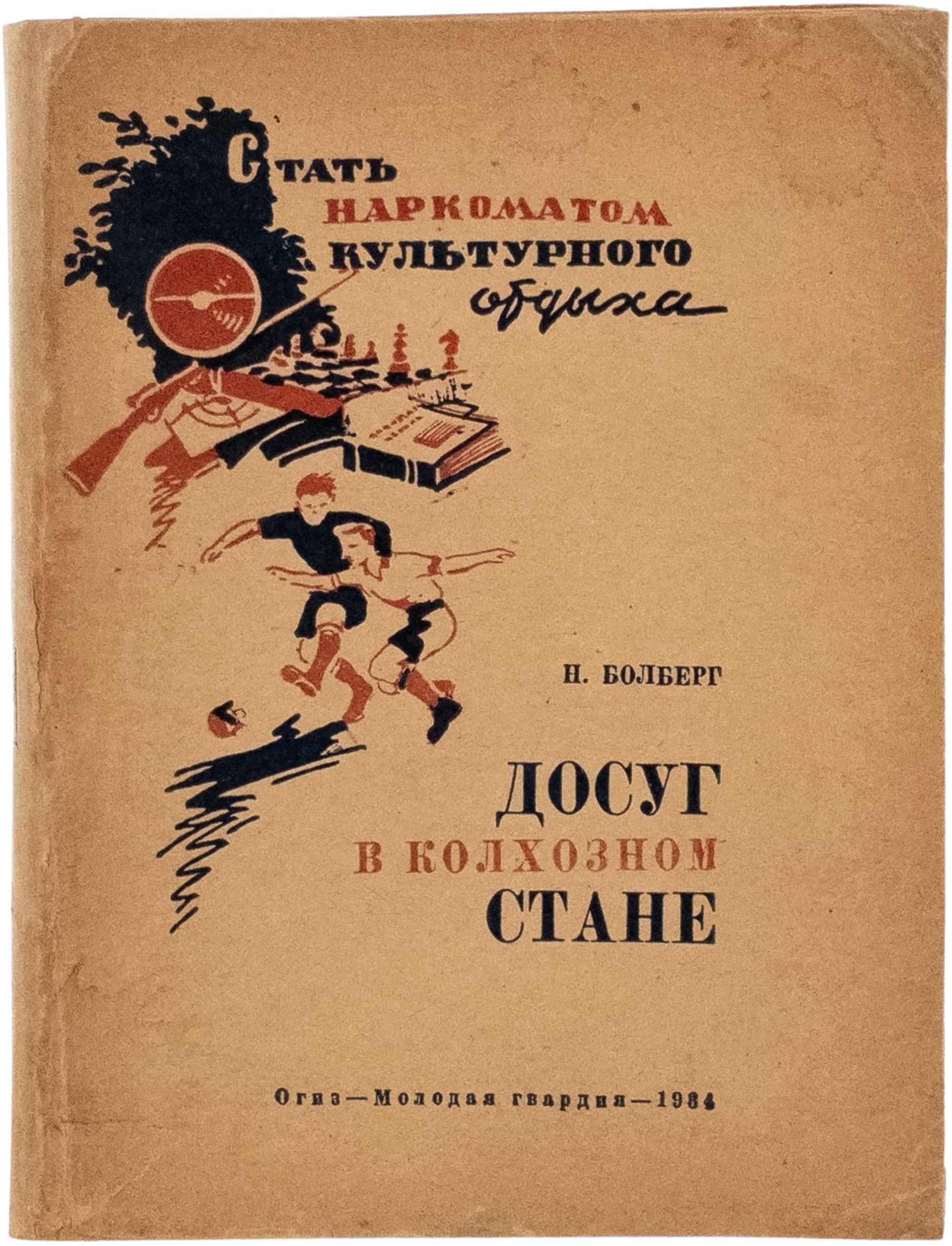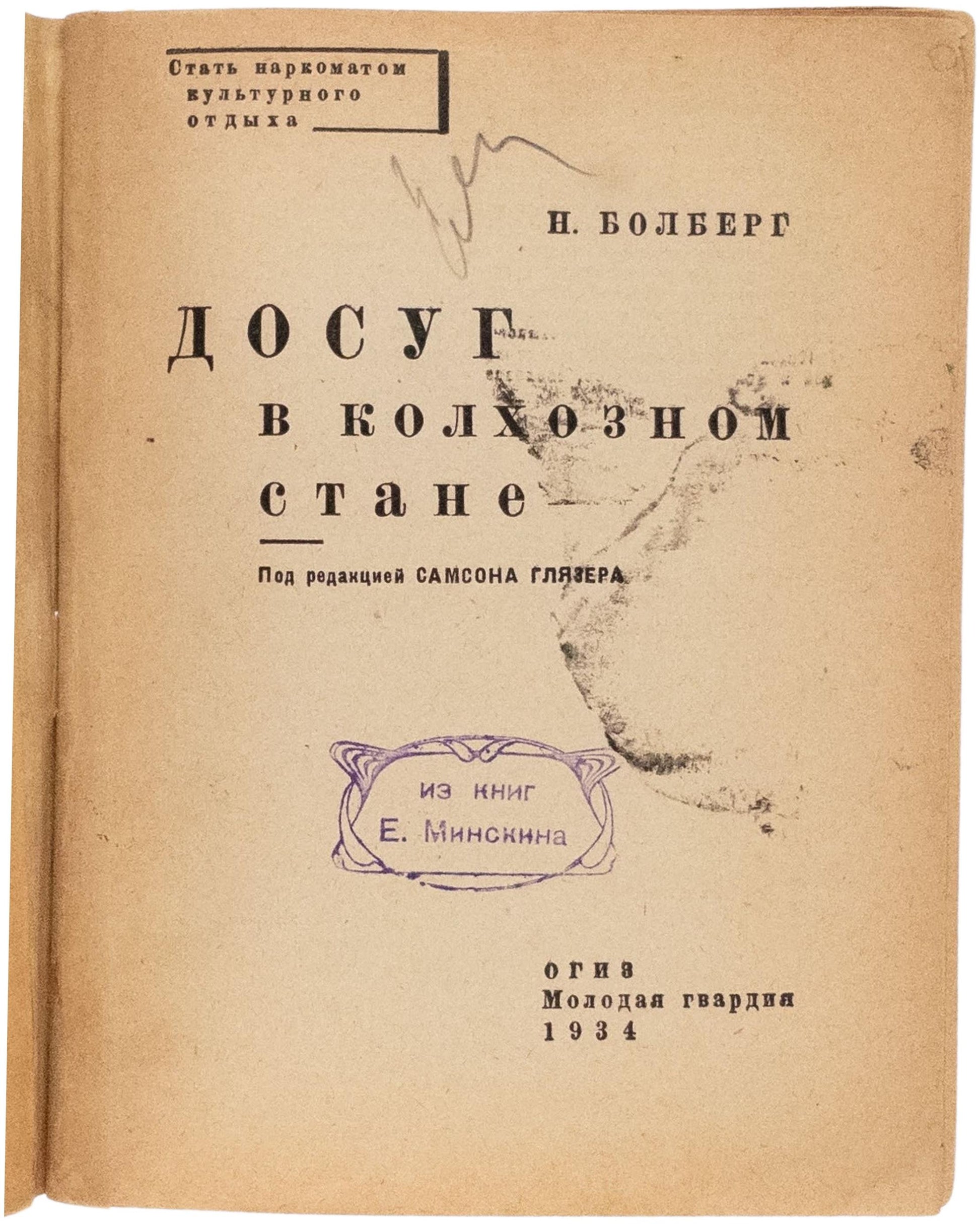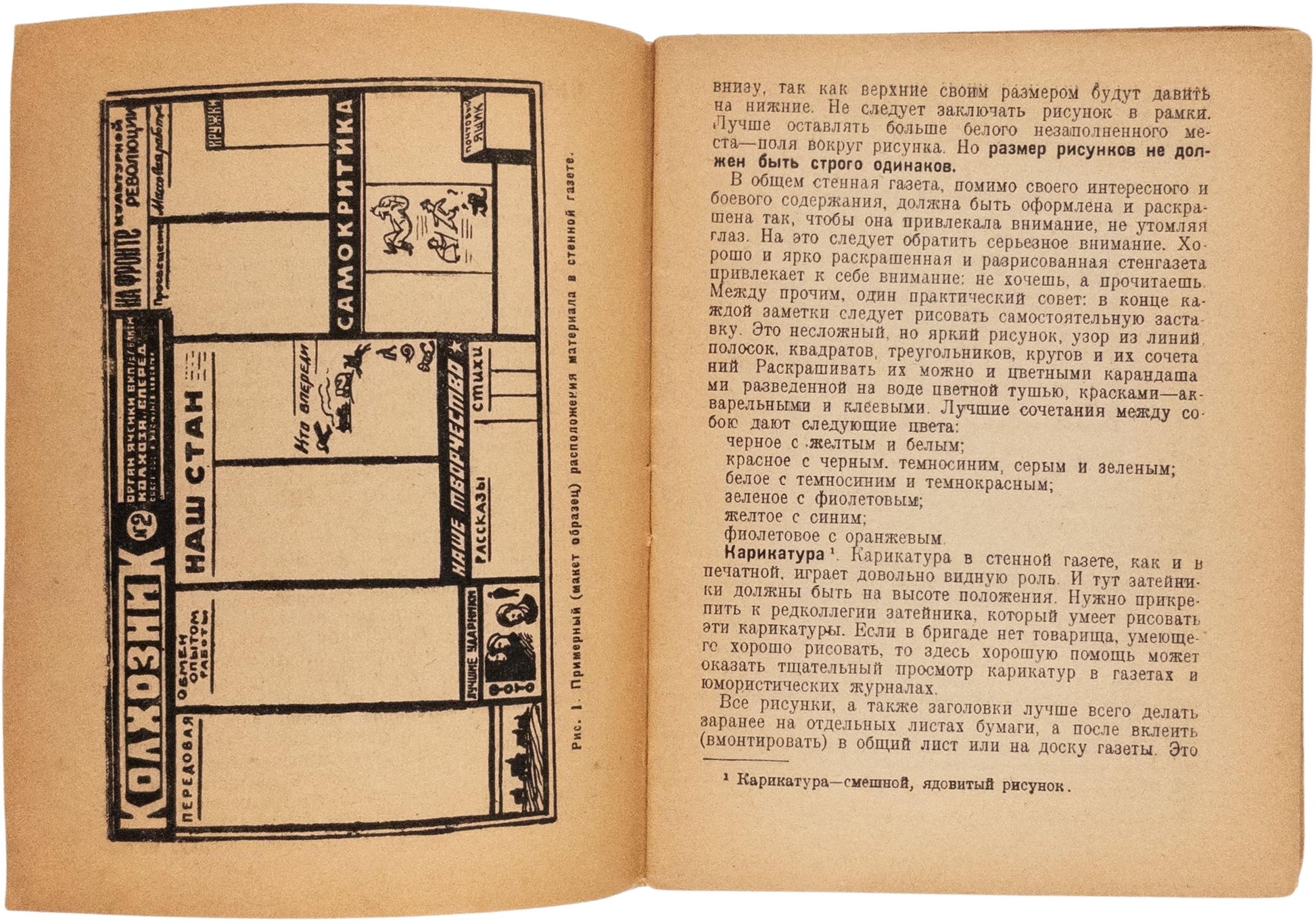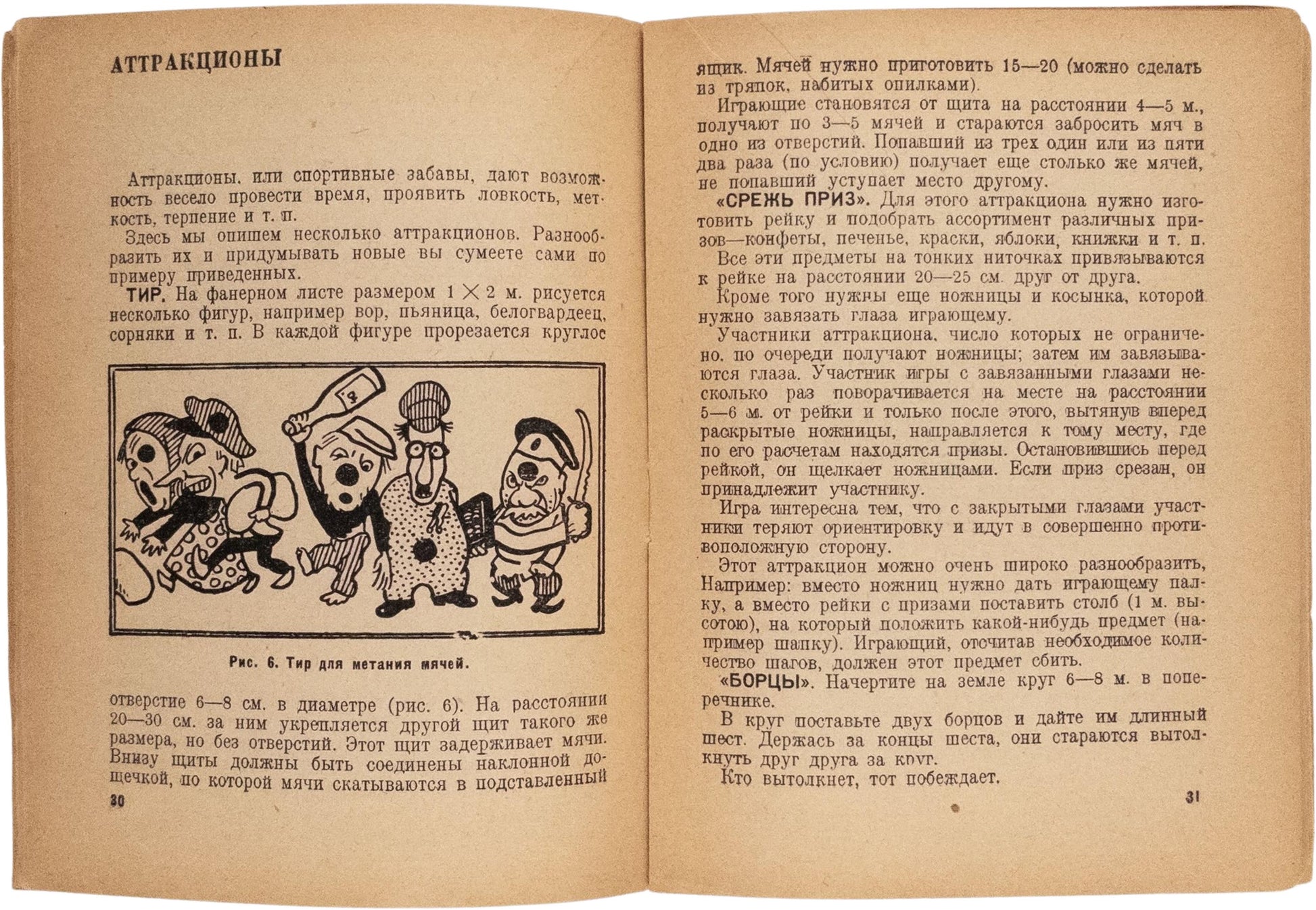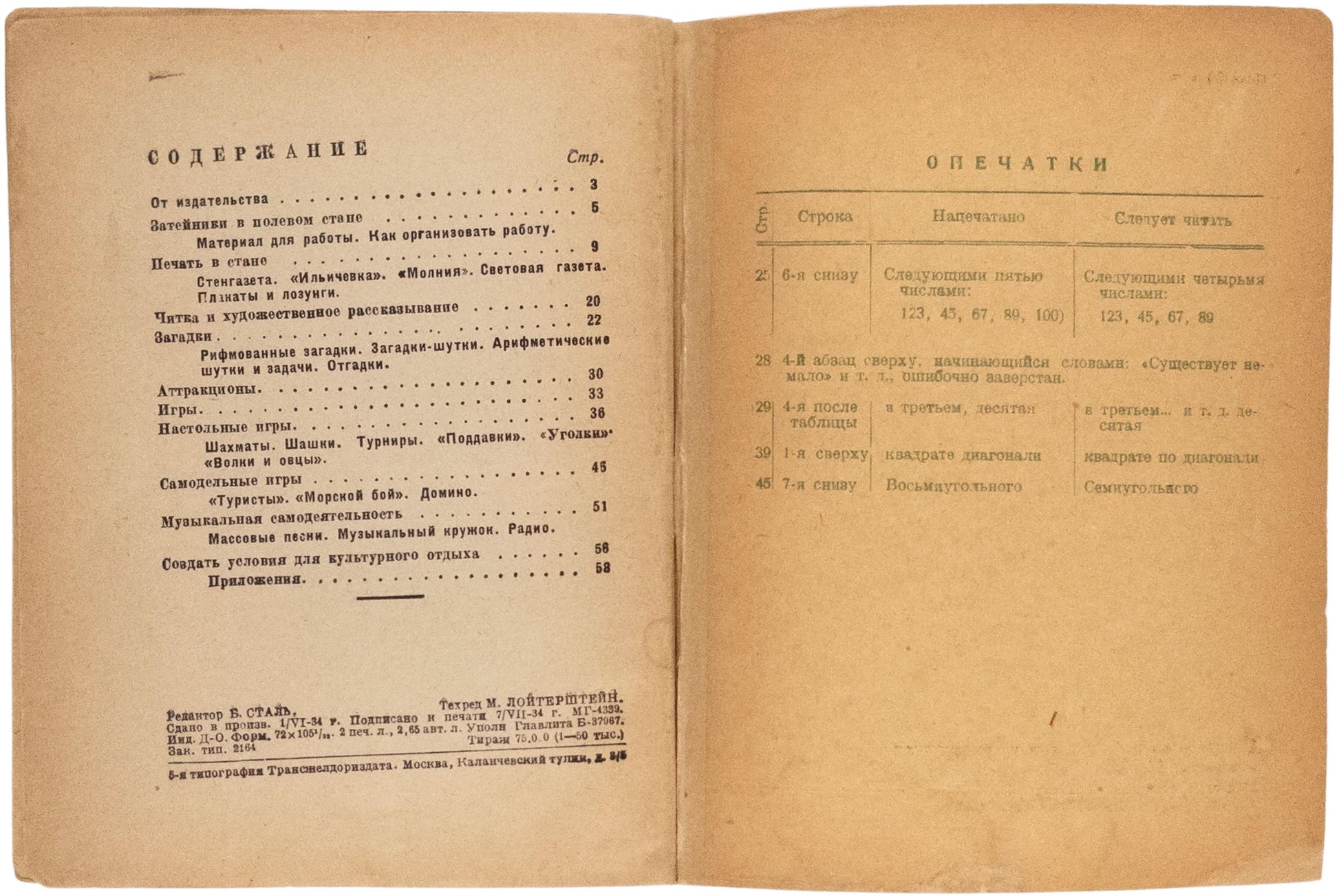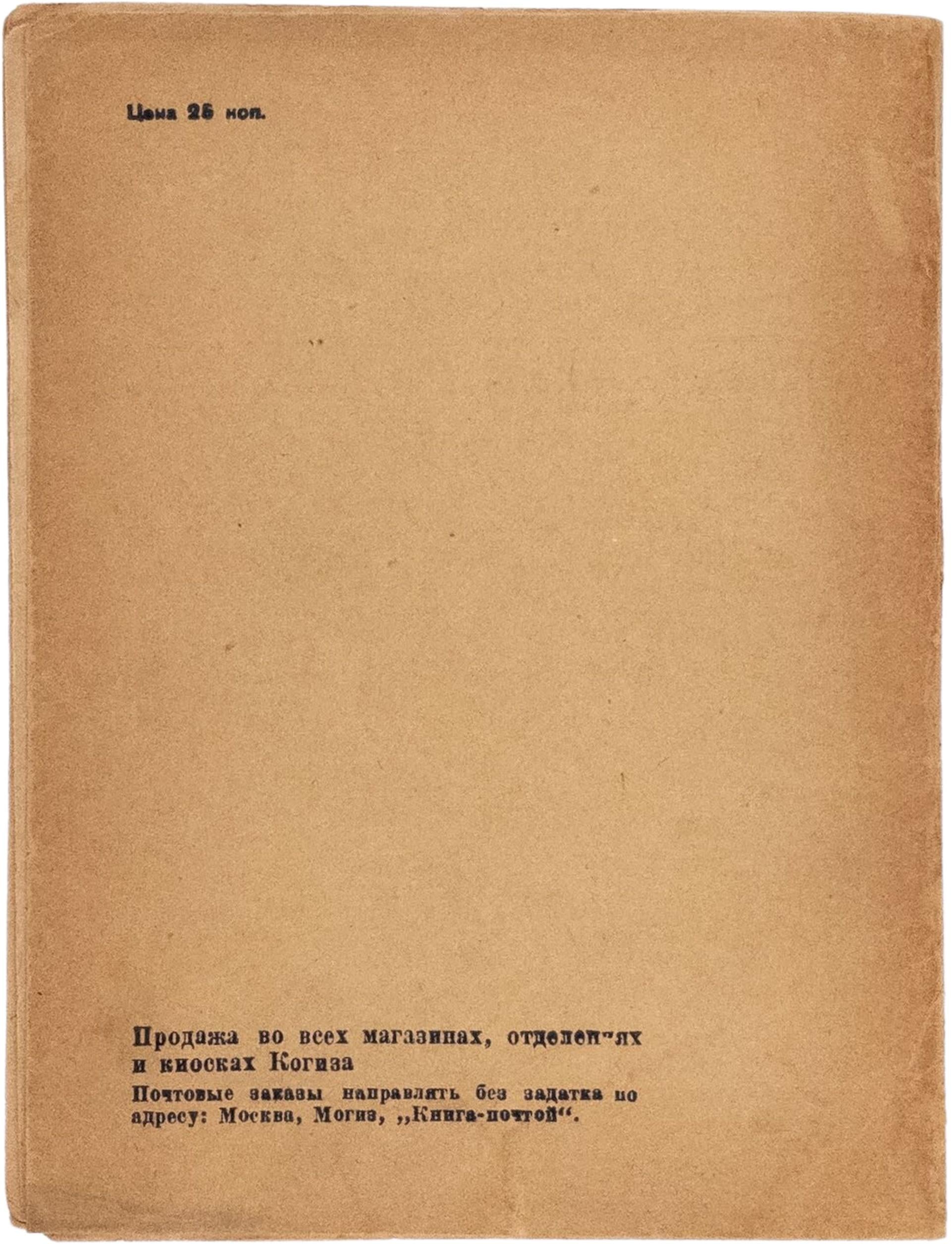Bolberg, N.
Leisure in the Kolkhoz Camp. A rare guide for collective farmers.
Leisure in the Kolkhoz Camp. A rare guide for collective farmers.
Couldn't load pickup availability
Bolberg, N. [Leisure in the Kolkhoz Camp]. Dosug v Kolkhoznom Stane.
Series [Becoming the People's Commissariat of Cultural Leisure] Stat' narkomatom kulturnogo otdykha.
Edited by Samson Gliazer.
[Moscow], OGIZ, Molodaia gvardiia, 1934.
12mo, 62, [2] pp., ill.
In original pictorial wrappers.
In good condition, restored along spine and with minimal repair to upper right corner, lightly rubbed, some very faint dampstaining to front cover, owner stamp 'Iz knig E. Minskina' to title.
Despite the fact that most research on Soviet-era daily life focuses on people's labor activities, it is important to highlight their leisure, a key aspect of human life in every culture. Publications on this topic were often reminiscent of medieval literature—full of teachings and instructions on righteous living, such as how to build relationships within the family, how to create a social circle, and how to organize leisure in different living environments and seasons.
This particular book focuses on a specific class of Soviet society—the peasants or collective farmers—and aims to 'provide material, teach how to live interestingly, and culturally organize the leisure of collective farmers in the field camp', a temporary accommodation site for agricultural workers, designed to support their daily needs and optimize logistics during work on remote farmland.
Before organizing the field camp, it was necessary to create 'the core of mass event organizers and entertainers' from Komsomol youth. The book contains scripts for leisure activities for weekdays, working days, and days off for kolkhoz peasants. These activities are divided into morning (chanting slogans, singing inspiring songs together), afternoon (creating wall newspapers about recent achievements, playing outdoor and board games, listening to and discussing radio news), and evening (singing and dancing). Special attention is given to days off, with each event varying under the control of Komsomol organizations and party organizers. Among other activities, the author suggests creating wall newspapers (including examples of letter design), reading aloud and retelling stories, with a particular emphasis on participating in intellectual games (such as chess and battleship) and physical games, including a ball toss game where players aim at targets depicting a thief, an alcoholic, and a White Guard. The book concludes with a list of recommended literature and radio programs for entertainment planning.
Interestingly, this book was published as part of a series with the somewhat odd title ‘Becoming the People's Commissariat of Cultural Leisure’. Most likely, this series contains only two books—this one and another titled ‘Komsomol Collective Farm Stadium’, both published in 1934.
Based on the owner's stamp, this copy comes from the library of Efim Minskin (1906–1987), an extracurricular educator and one of the leading experts on play in the USSR.
We couldn’t trace any copy of this edition in the USA or European libraries via OCLC.






